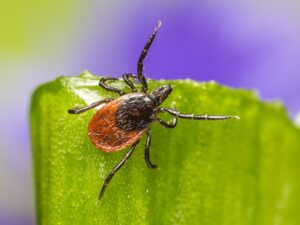 Farmers could boost cow health and productivity at minimal cost by adopting a partial DCAB diet through the transition period, according to nutritionists at CMC.
Farmers could boost cow health and productivity at minimal cost by adopting a partial DCAB diet through the transition period, according to nutritionists at CMC.
Dry cow diets are arguably the most important – but hard to perfect – parts of the dairy cow lactation. However, using a partial Dietary Cation-Anion Balance (DCAB) feeding system is one way to balance nutrition and costs to maximise herd health and productivity, says Pete Davis, ruminant nutritionist at CMC.
One of the most common problems around calving time is milk fever, caused by a lack of calcium at the start of lactation. Affecting 7-8% of the UK herd, it causes muscle weakness and uterine inertia, potentially leading to poor fertility or even death.
Farmers often use the DCAB feeding system to minimise the risk of milk fever. It works by creating acidic conditions in the blood, which promotes calcium mobilisation from the cow’s bones and prevents blood calcium levels from dipping. “At the start of lactation, a cow’s demand for calcium dramatically increases,” explains Mr Davis. “The requirement is so high that it is nearly impossible to provide adequate levels from diet alone. Therefore, to avoid health issues, it’s essential to prepare the cow’s body for calcium mobilisation by keeping calcium levels suppressed during the transition period.”
However, full DCAB diets – which are based on feeding mineral supplements to dry cows to create the acidic conditions – can be costly; and if not fed accurately can actually increase the likelihood of milk fever, says Mr Davis. “Partial DCAB diets are a simpler and lower-cost option for farmers. These involve careful utilisation of feeds to minimise sodium and potash intake, usually with the addition of magnesium chloride to create the optimum DCAB level.”
Cornish dairy farmer, Mark Button, has seen great results with his 940-head dairy herd since switching to a partial DCAB diet with a calcium binder in 2014. Far off dry cows receive a mix of 6kg of brewer’s grains, 4.5kg of ground straw and 20kg of grass silage. “To keep management simple, the close-up group receive 80% of the same mix, with the addition of 4kg of maize silage, an extra 4kg of brewer’s grains and the calcium binder X-Zelit,” adds Mr Button.
The grass silage reflects the ingredients animals will receive in the milking cow diet, however, its high calcium and potassium levels could be problematic. “To counteract this, we add the brewer’s grains, maize silage and X-Zelit, which binds the additional calcium in the diet,” explains Mr Davis. “We calculate the quantity carefully, so it binds the exact amount of calcium that we need to remove from the diet – leaving enough in the remaining ration to meet the dry cow’s requirements.”
Mr Button has subsequently seen improvements to both herd health and fertility. “Prior to switching the diet, we had a few issues with milk fever and retained cleansings, and while our milk fever percentage was low across the herd – at about 3 to 4% – we have now managed to reduce this to less than 0.5%.”
Partial DCAB diets are much more cost effective than full diets, and though there is an added cost for the calcium binder, it guarantees consistency for farmers, says Mr Davis. “Grass silage quality varies depending on the cut, but this helps to balance out any variations, giving farmers security and more flexibility for any movements in the diet.”




